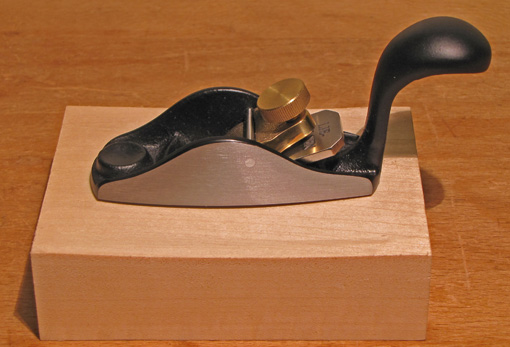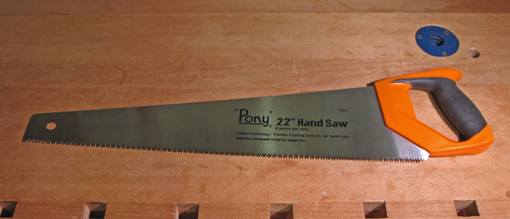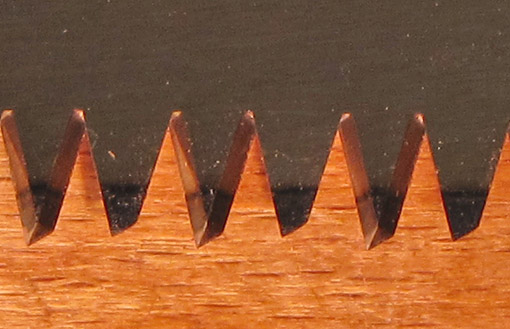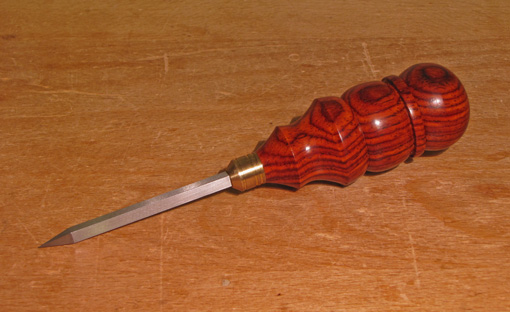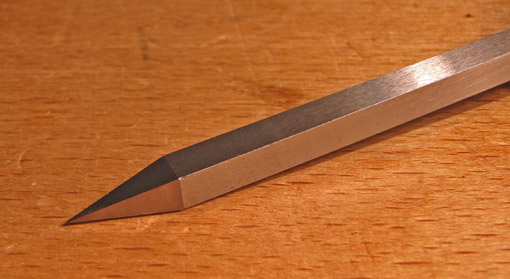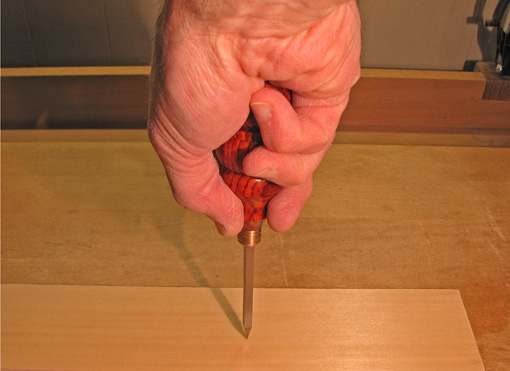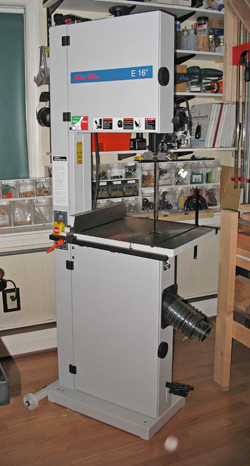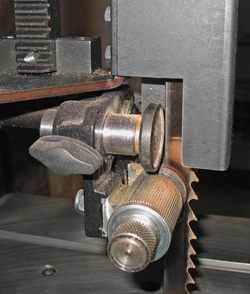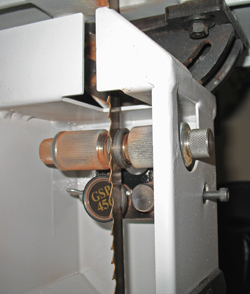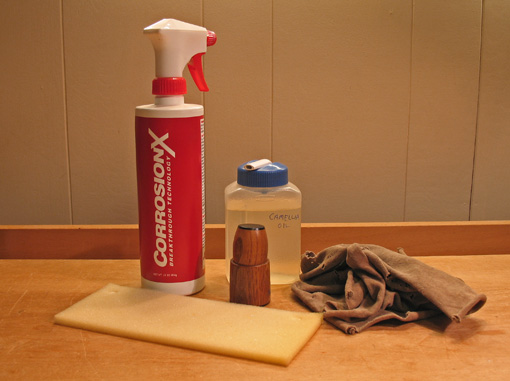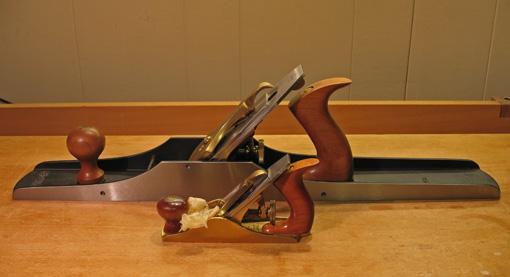Before using this unimposing little plane I was doubtful that it could get much work done but having put it to work in the shop I am convinced that it really performs. It brings an effective combination of toughness and control to curved work and hollowing.
The plane has a bevel-up A2 blade bedded at 20̊ and a 3 1/2″ long double convex sole with a shallow 27″ radius along its length and a steeper 3″ radius across its width. The blade is secured with a simple cap and thumbscrew mechanism and is adjusted by hand or by tapping with a small hammer. Nothing complicated with this tool, it goes right to work.
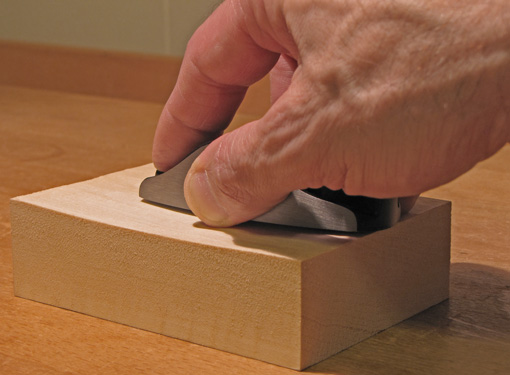
The “squirrel tail” handle is the key to controlling the plane. The dome of the tail nestles in the lower part of the palm of the hand while the fingers surround the plane’s body with the index finger settling on the round depression at the front of the tool. This allows one to adjust and balance hand pressure toward the front or back of the tool as needed in order to engage the blade to cut on a curved surface. I find this makes it easier and more natural to control than other convex sole tools such as a spokeshave.
The mouth opening is quite wide which, along with the curved blade, and lightweight handiness of the plane, allow quick back and forth strokes, much like the action of a scrub or jack plane. I find this tool is best used as a sort of mini jack plane for hollowing. The photo below shows an example.
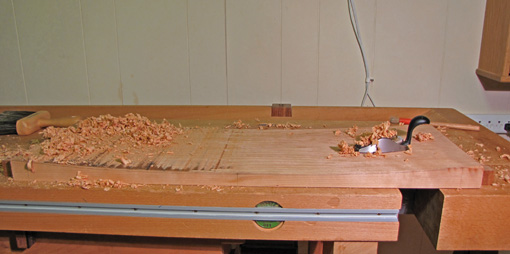
I bandsawed a shallow lengthwise curve into a 27″ long piece of plump 5/4 9″ wide cherry which will be used as the top of a wall cabinet. I used the convex sole plane to efficiently remove the bandsaw marks and refine the curve. The plane felt like an extension of my hand allowing me to work intuitively as I formed the curve to my liking. The shallow scallops that remained were easily removed first with a curved Surform rasp followed by an Auriou curved “ironing rasp,” hand scraper, and sandpaper.
[I will mention that removing a substantial portion of wood from one side of a board like this is likely to create problems as the internal stresses in the board become unbalanced. I plan to discuss in a future post how I anticipated and worked around this sneaky problem.]
While I’m very happy with the L-N convex sole plane and recommend it, I would consider some design changes if I could have my preferences. It is a bit undersized for medium scale work, although an increase in size might sacrifice some of its handiness. A slightly larger radius across the width of the sole would suit more of my work. Perhaps a choice of sizes and soles could be made. Finally, knurling or a coarse surface on the widest parts of the sides would allow a better finger tip grip. I guess I can add that myself.
This tool review is unsolicited and uncompensated.

